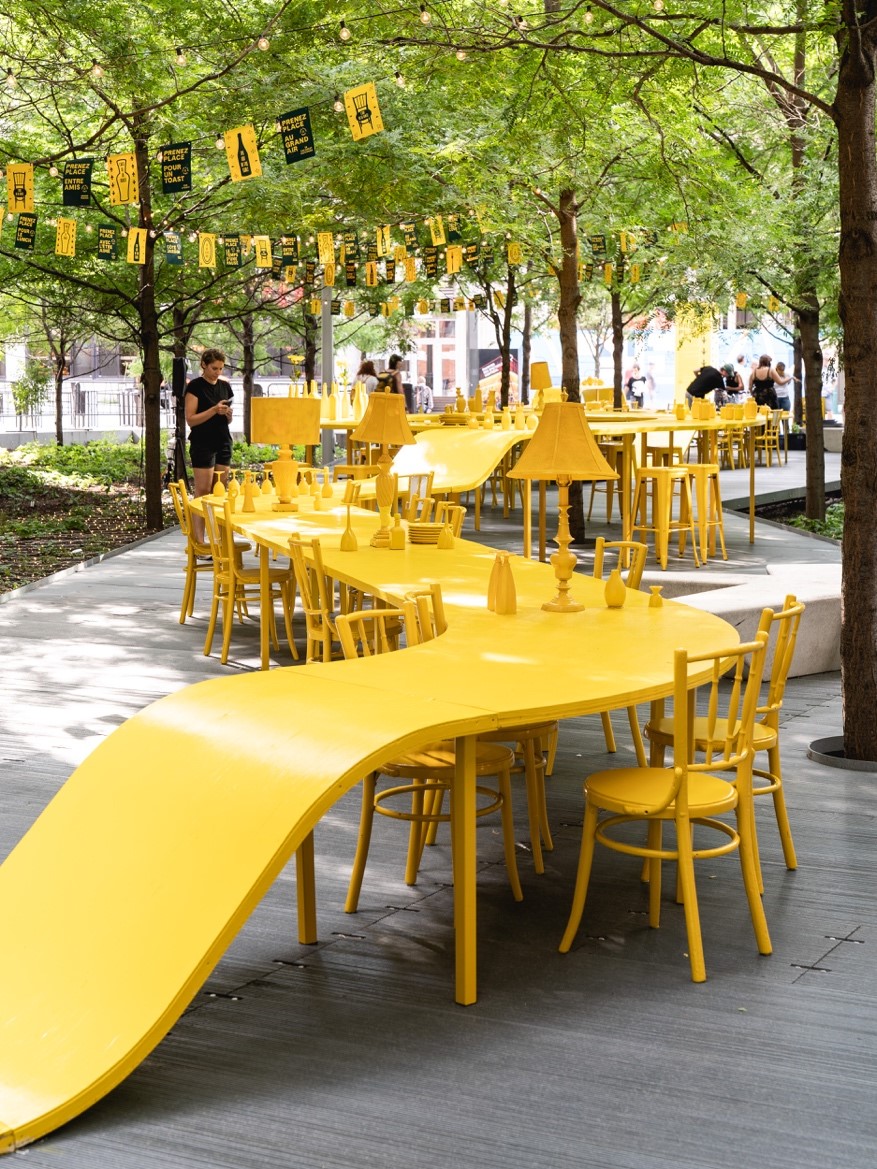
A social-distancing installation by ADHOC and graphic designers Maude Lescarbeau and Camille Blais. Photo: Raphaël Thibodeau
Since July, COVID-weary Montrealers have enjoyed at least one bright spot in their city – an installation built especially for people to gather outdoors while also staying apart. Titled Your Place at the Table, the temporary project designed by local firm ADHOC is one continuous tabletop 100-metres in length. Meandering through Hydro-Quebec Park near Quartier des Spectacles, its undulating profile is surrounded by an assortment of chairs painted in an upbeat shade of yellow that can’t help but lure in strangers to take a seat and connect without fear.
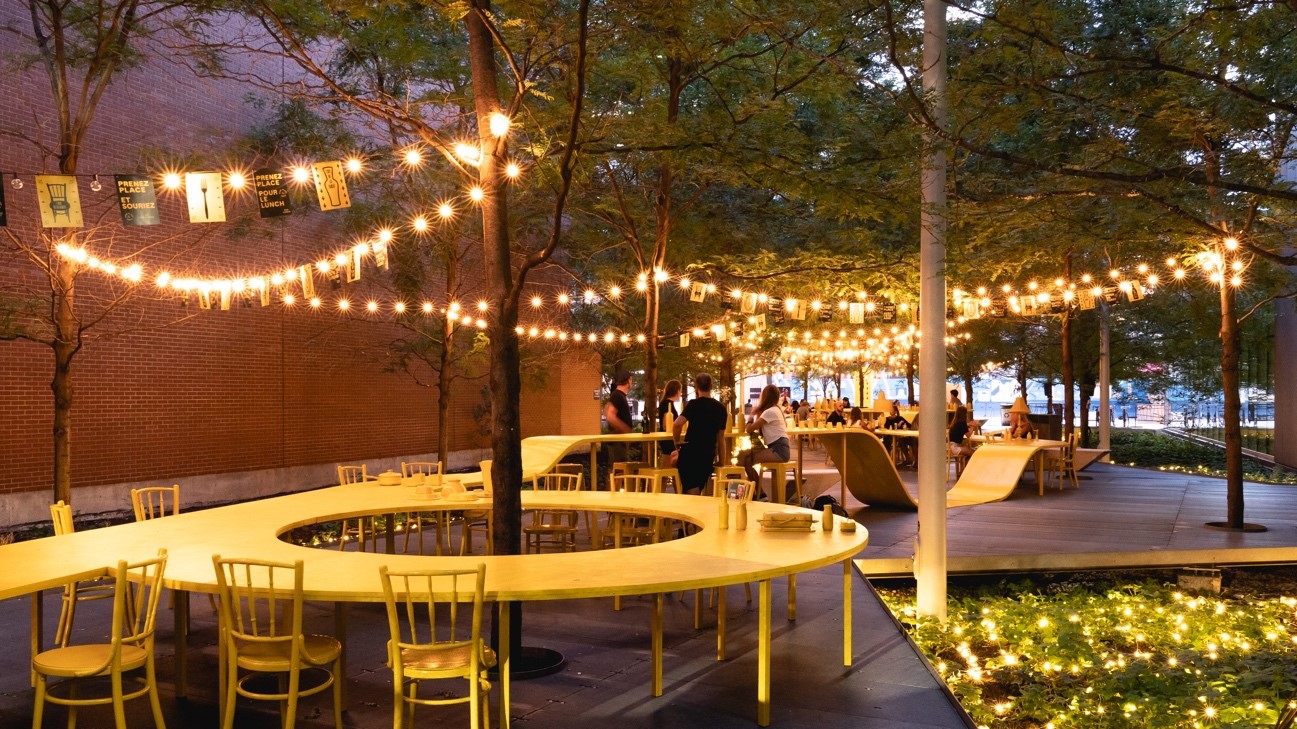
The vibrant-yellow installation brings strangers together in a way that‘s safe and fun. Photo: Raphaël Thibodeau
Your Place at the Table is a compelling example of how design can flip seemingly unsurmountable problems into new ways of thinking and being. Not only does ADHOC’s extra-long table repurpose an existing landscaped pathway into a communal gathering place, but it has also given nearby cafés added space for take-out patrons to eat outdoors, thereby helping struggling restaurants.
As we move back indoors this winter, a similar kind of creative reinvention will be needed to ensure social distancing is not only carefully delineated but also practiced. Offices are among the most challenging environments for keeping people apart. Yet the pandemic may actually help make them even better.
.jpg)
An uncomplicated solution for distancing at work is a transparent screen like this one by DVO of Italy. Photo: DVO
In many ways, the coronavirus has pushed existing workplace trends into higher gear, where flexibility and mobility are favoured over sitting behind one desk all day. Furniture, such as privacy screens and bench-like seating for a casual gathering, are common in any post-cubicle work environment. When open-concept offices first took hold a decade ago, the initial intent was to carve out areas for both boisterous collaboration and solo work. That kind of spatial flexibility is proving to be equally suited for maintaining safe distances between colleagues.
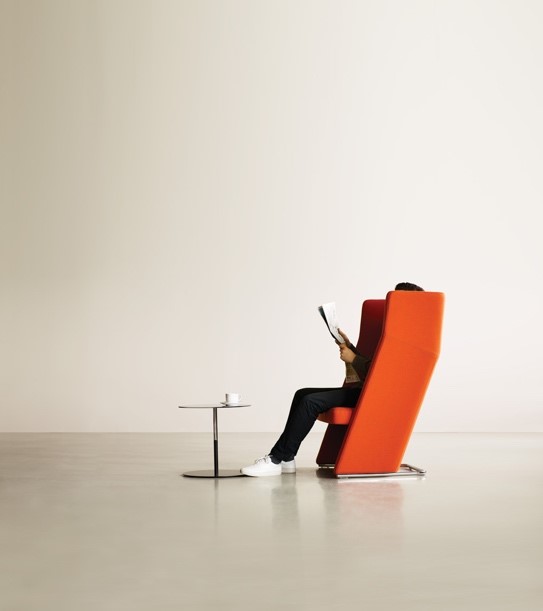
Originally intended for added privacy, the Talk chair is also good at blocking airflow. Photo: Kielhauer
Contract furniture companies like Kielhauer have experienced an uptick in products originally designed to reduce sound and sight distractions. There has been a renewed interest in the Talk chair, for instance. Launched in 2012 by Austrian studio EOOS, its extra-high back and generous side panels also act as effective airflow blockers.
Contract textiles also generally meet the high standards and performance requirements of healthcare environments, and, therefore, are more germ-resistant than residential upholstery. Concertex’s Warp collection is one such textile, a blend of polyester and TPE fabric with an acrylic backing that can be washed cleaned using disinfecting bleach.
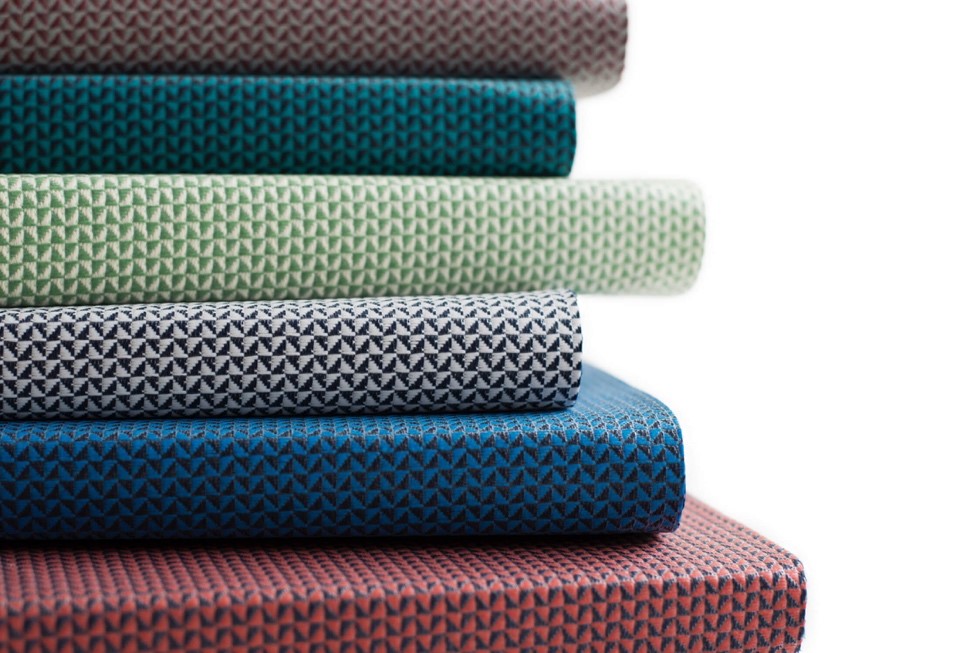
Textiles that can be wiped clean are already staples in office environments. Photo: Concertex’s Warp collection.
Adequate distancing can’t rely on furniture alone. Trend experts at Steelcase in the US recently published a 30-page online guide on how companies can prepare offices in both big and small ways for employees’ gradual return. They describe using arrows and signage to direct movement flow, much like other public spaces are doing.
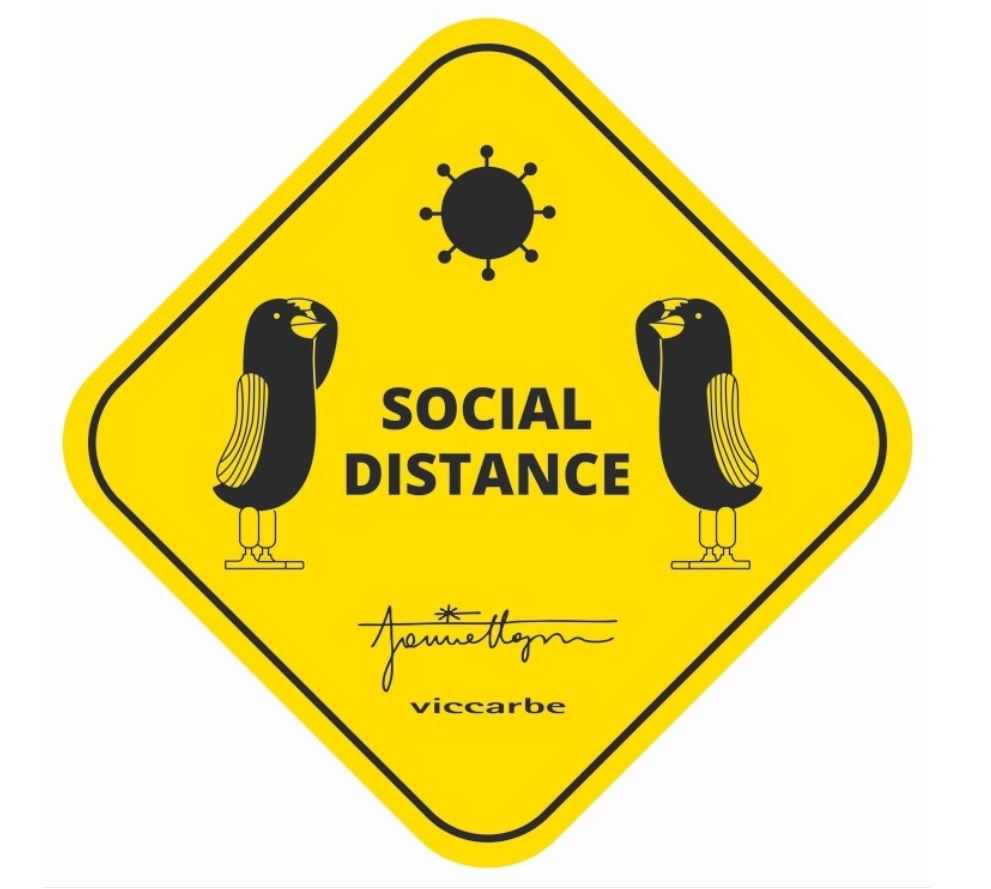
Keeping distance in a nice way. Jaime Hayon has created his own signage for this. Photo: Viccarbe
The larger gestures include arranging desks in formations where employees are seated with their backs turned outward – a layout that allows for close but safe proximity, or with added screens wedged between desks. Ultimately, though, it is the shift toward furniture designed to be moved around that has made impromptu rearrangements possible and relatively easy.
.jpg)
The classic Parentesit screen by Arper creates a room within a room.
With each phase of the pandemic, new adjustments will be required. As the Steelcase experts note, returning to the workplace won’t be easy, no matter how well-planned: “Like reopening the economy, it will happen in waves and it will be stressful for both organizations and workers.”
The ultimate goal is to continually ensure our indoor environments are as safe as they are social. ADHOC’s meandering outdoor table managed to turn isolation on its head by bringing everyone to the table without disrupting the requisite distancing measures. Inside, we still want and need to gather. It’s up to designers to find ways to do that in ways that are impactful, intuitive, and, hopefully, inspiring, too.
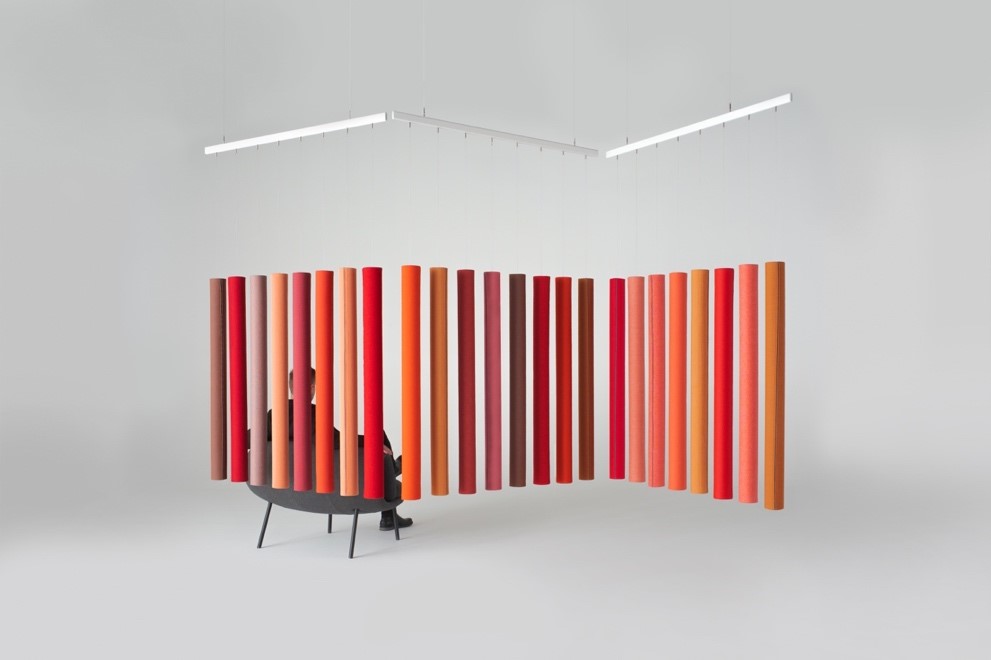
Andrea Ruggiero’s hanging soundsticks offer several functions, including spatial barriers. Photo: Offecct.
Based on an article by Barbara-Jahn Rösel originally published for the German ARCHITECT@WORK newsletter